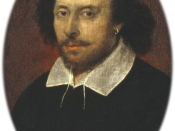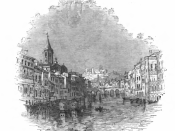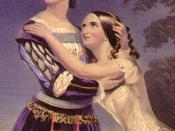The period of Elizabethan theatre covers the plays written and performed in England during the reign of Queen Elisabeth I (1558-1603). It also includes the time of her immediate successors James I and Charles I. This age of theatre was securely ended by the closure of all public theatres in London in 1642 with the onset of the Civil War. Elizabethan Theatre was very different to modern theatre. Not only was it looked upon as unclean and had an unsavoury reputation. Staging and settings were very simple and all the performances relied heavily on the audience's imagination and trust. Elizabethan Theatre and the name of William Shakespeare are inextricably bound together; without the bard it would not have been half the success.
The theatre of the Golden Age was either public or private. Nobles or her Majesty herself in their own residence held private theatre with only the audience they invited.
Public theatre was not permitted within London city, so theatres opened across the Thames in Southwark. The first proper public theatre to open was the Theatre located in Shoreditch in 1576. Following was the Rose (1587), the Hope (1613) and possibly the most famous Globe (1599) which Shakespeare himself owned a share in. The original Globe was only in use until 1613 when it was burnt to the ground after a canon fired in Henry VIII lit the thatched roof on fire.
Some theatres were even built to accommodate the needs of certain Shakespearean plays. By 1600 there were several theatres, which had an upper level to be used as a balcony (Romeo and Juliet) or as a position for an actor to address a crowd (Julius Caesar).
The acting companies using the public theatres pretended their public performances in Southwark were mere rehearsals for the frequent performances before...


